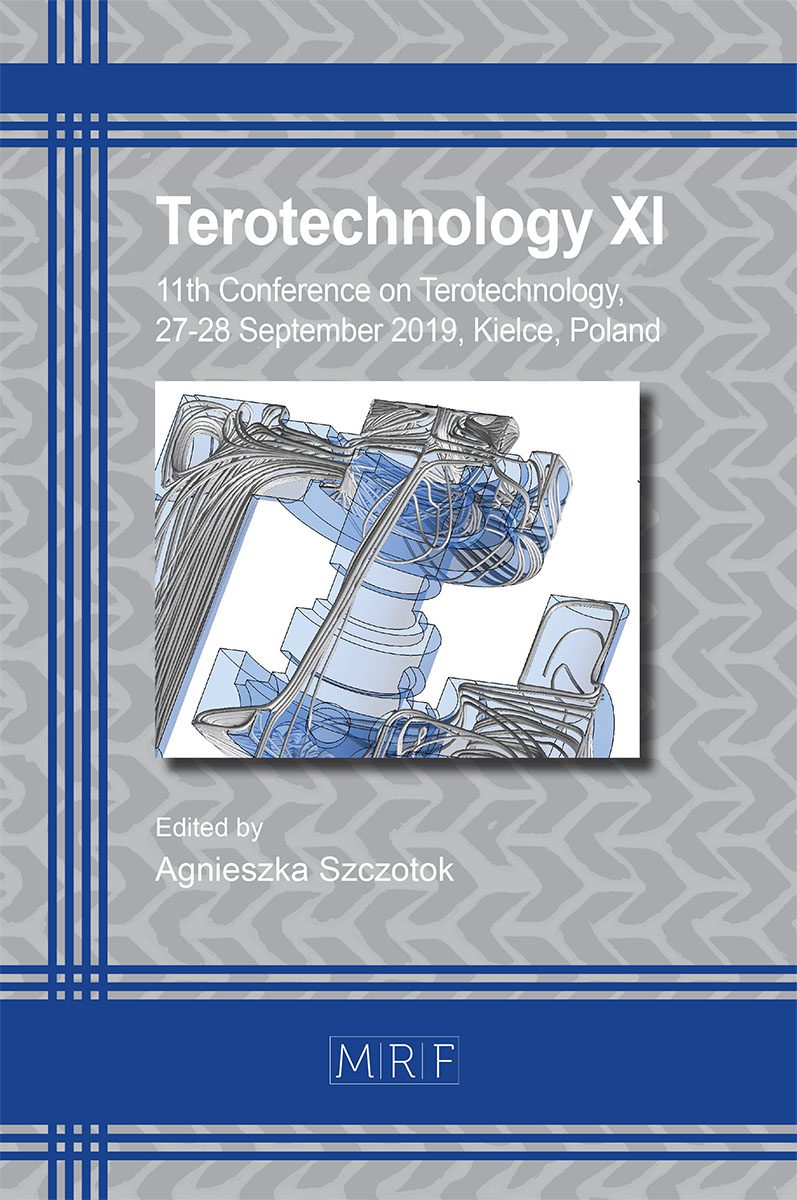The Micro Machining of Polypropylene by UV Laser – the Influence of Laser Operating Parameters
TOFIL Szymon
download PDFAbstract. This article presents the research on the impact of operating parameters of a TruMicro 5325c laser device with ultra-short pulses and UV radiation on the polypropylene surface. By changing the frequency of laser pulses, the effect of their impact on the surface of the processed material, which was propylene, was studied. To verify the results, a HIROX KH-8700 confocal digital microscope with software for analyzing the obtained image was used. The efficiency of the performed process was calculated and the optimal working parameters of the device, which do not cause damage to the processed material, were determined.
Keywords
Picoseconds Laser Micro Machining, Polymer Materials, Cold Ablation Phenomenon, Laser Surface Treatment, Polypropylene
Published online , 6 pages
Copyright © 2020 by the author(s)
Published under license by Materials Research Forum LLC., Millersville PA, USA
Citation: TOFIL Szymon, The Micro Machining of Polypropylene by UV Laser – the Influence of Laser Operating Parameters, Materials Research Proceedings, Vol. 17, pp 126-131, 2020
DOI: https://doi.org/10.21741/9781644901038-19
The article was published as article 19 of the book Terotechnology XI
![]() Content from this work may be used under the terms of the Creative Commons Attribution 3.0 licence. Any further distribution of this work must maintain attribution to the author(s) and the title of the work, journal citation and DOI.
Content from this work may be used under the terms of the Creative Commons Attribution 3.0 licence. Any further distribution of this work must maintain attribution to the author(s) and the title of the work, journal citation and DOI.
References
[1] N. Stankova et al., Fs- and ns-laser processing of polydimethylsiloxane (PDMS) elastomer: Comparative study, App. Surf. Sci. 336 (2015) 321–328. https://doi.org/10.1016/j.apsusc.2014.12.121
[2] C. Dupas-Bruzek et al. Transformation of medical grade silicone rubber under Nd:YAG and excimer laser irradiation: First step towards a new miniaturized nerve electrode fabrication process, App. Surf. Sci. 255 (2009) 8715–8721. https://doi.org/10.1016/j.apsusc.2009.06.025
[3] H. B. Liu, H. Q. Gong, Templateless prototyping of polydimethylsiloxane microfluidic structures using a pulsed CO2 laser, J. Micromech. Microeng., 19, 3 (2009) 1-8. https://doi.org/10.1088/0960-1317/19/3/037002
[4] B. Antoszewski, Sz. Tofil, M. Scendo, W. Tarelnik, Utilization of the UV laser with picosecond pulses for the formation of surface microstructures on elastomeric plastics, IOP Conf. Series: Materials Science and Engineering 233 (2017) 1-6. https://doi.org/10.1088/1757-899X/233/1/012036
[5] N. Radek, J. Pietraszek, B. Antoszewski, the average friction coefficient of laser textured surfaces of silicon carbide identified by RSM methodology, Advanced Materials Research 874 (2014) 29-34. https://doi.org/10.4028/www.scientific.net/AMR.874.29
[6] N. Radek, K. Bartkowiak, Laser treatment of Cu-Mo electro-spark deposited coatings, Physics Procedia 12 (2011) 499-505. https://doi.org/10.1016/j.phpro.2011.03.061
[7] Gądek-Moszczak A., Radek N., Wroński S., Tarasiuk J., Application the 3D image analysis techniques for assessment the quality of material surface layer before and after laser treatment, Advanced Materials Research 874 (2014) 133-138. https://doi.org/10.4028/www.scientific.net/AMR.874.133
[8] Radek N., Bartkowiak K., Laser treatment of electro-spark coatings deposited in the carbon steel substrate with using nanostructured WC-Cu electrodes, Physics Procedia 39 (2012) 295-301. https://doi.org/10.1016/j.phpro.2012.10.041












